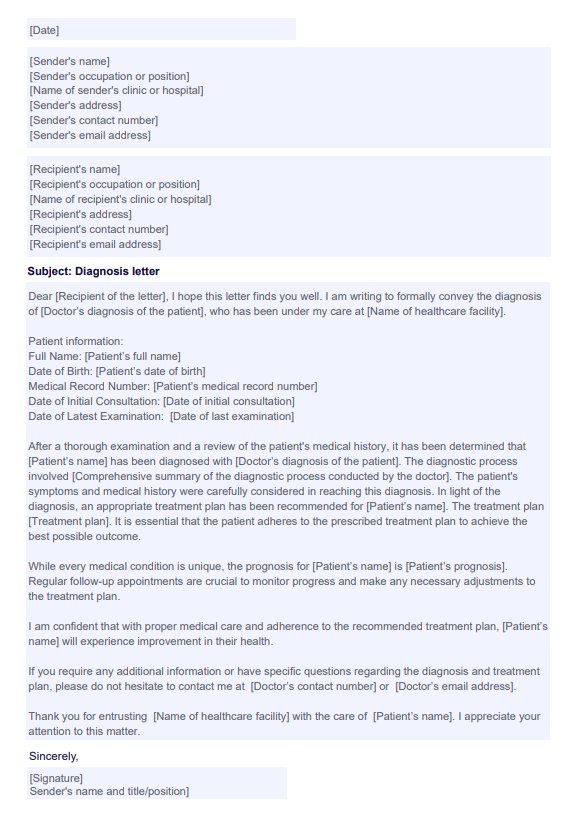To get a diagnosis letter, request it from your primary care doctor or specialist. They will review your medical history, conduct any necessary examinations or tests, and then provide a written statement that confirms your medical condition and diagnosis.

Diagnosis Letter from Doctor
Use our free Diagnosis Letter from Doctor template to provide a quick and hassle-free formal confirmation of your diagnosis for your patients.
Diagnosis Letter from Doctor Template
Commonly asked questions
To get a diagnosis from your doctor, schedule an appointment and discuss your symptoms in detail. The doctor will perform a thorough examination, possibly order tests, and then determine the underlying cause of your symptoms, providing you with a diagnosis based on their findings.
A doctor writes a diagnosis by conducting a comprehensive evaluation of the patient's medical history, performing necessary tests, and documenting relevant details. The diagnosis is recorded clearly and concisely in the patient's medical records, often including relevant test results and observations and the physician's signature.
EHR and practice management software
Get started for free
*No credit card required
Free
$0/usd
Unlimited clients
Telehealth
1GB of storage
Client portal text
Automated billing and online payments











